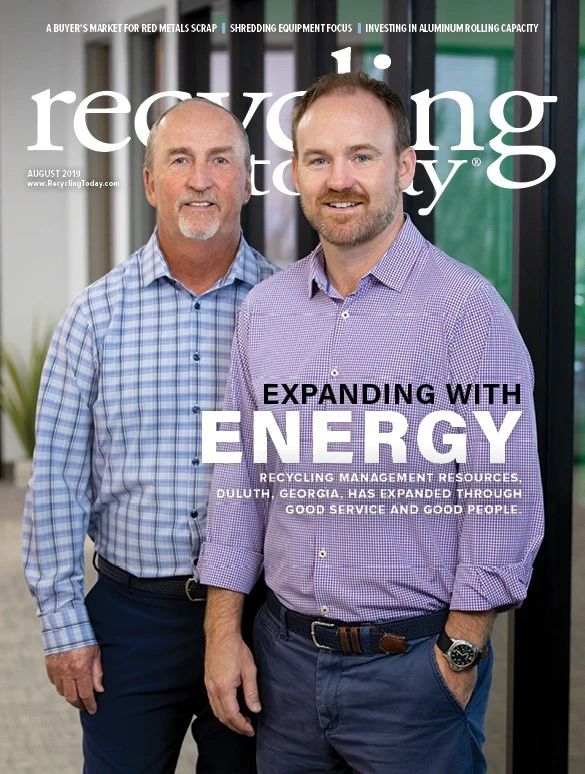Demand for U.S. recovered fiber remained soft in the July buying period, according to the latest Fastmarkets RISI PPI Pulp & Paper Week report. In July, prices for high grades, such sorted office paper (SOP) and pulp substitutes, fell in all parts of the U.S., while national average pricing stayed at $25 per ton for old corrugated containers (OCC) and at -$2 per ton for mixed paper.
“Movement’s been somewhat consistent,” says a recycler and mill operator in the Southeast. “It’s a little better than it was two or three months ago, but I wouldn’t call it great.”
While OCC prices in most parts of the U.S. didn’t change for the first time in nearly half a year, these prices remain very low compared with historical averages.
Movement has been “a little better than it was two or three months ago, but I wouldn’t call it great.” – a recycler and mill operator in the Southeast
“The current price of OCC is at 25-year lows,” says Chip Dillon, a partner at Vertical Research Partners, Stamford, Connecticut. “Because [OCC] is hard to store, it’s $25 a ton with virtually no value. There’s a limit to how much can be hanging around. You’re starting to see a lot of indications in various places where OCC is being put into a landfill.
“I don’t know how long the prices will stay here,” Dillon adds. “The longer it stays here, the more likely it is that you’ll see some kind of permanent reduction in the collection systems.”

In the Southwest, average prices for OCC fell by about $5 per ton in July. A recycler in the South says the region has a glut of OCC because some of the Mexican mills are full. He says mills in the Southwest are getting a lot of calls from recyclers looking to sell them OCC.
“With prices being what they were, [Mexican mills] were buying a lot of material, but now they have heavy inventory,” the recycler in the South says.
While his company is moving OCC steadily, he says prices are depressed. “It’s a positive sign that [prices] stabilized overall,” he says. “When prices are down, you look at the trends of our industry; prices do go up.”
Several mill operators say lower OCC prices have decreased the incentive for paper mills to buy mixed paper. “Mills are thinking long and hard about why consume mixed paper when we can consume OCC for $30 more,” the recycler and mill operator in the Southeast says.
“When prices are down, you look at the trends of our industry; prices do go up.” – a recycler in the South
Both the recycler in the Southwest and the recycler and mill operator in the Southeast say the declines in SOP prices can be attributed to shutdowns related to a couple paper mill fires. Marcal Paper Mill in Elmwood Park, New Jersey, temporarily closed operations after a fire in January; Georgia-Pacific’s paper mill in Muskogee, Oklahoma, temporarily shut down after it caught fire May 13.
“Both of those closures threw SOP into the market,” the recycler in the South says.

Increased domestic demand for OCC could be on the horizon as a handful of paper mills have announced plans to start operations or expand in the next few years. In July, Crossroads Paper announced plans to construct a $320 million recycled containerboard mill in the Salt Lake City area that it expects to be operational by early 2022. The new company has the goal of producing about 1,000 tons of packaging paper per day. The venture is led by brothers Ronald and John Sasine.
Ronald Sasine leads Bella Vista, Arkansas-based Hudson Windsor, a retail packaging consultancy focused on strategy development, packaging innovation and supply-chain transparency. John Sasine is the owner of Rocky Mountain Recycling (RMR), Salt Lake City.
However, Dillon says he is cautious regarding some of the new mill announcements that have been made this year, including the Crossroads Paper announcement. “Everything that’s announced doesn’t necessarily happen,” he says. “We’ve seen a bunch of announcements but look at each case individually.”
He adds that if companies are simply planning to build paper mills to make a profit on today’s cheap OCC, problems could arise. “It takes time to get [investments] back, and you have no idea what OCC prices will be next year, let alone three years from now,” Dillon says.

Explore the August 2019 Issue
Check out more from this issue and find your next story to read.
Latest from Recycling Today
- Nucor receives West Virginia funding assist
- Ferrous market ends 2024 in familiar rut
- Aqua Metals secures $1.5M loan, reports operational strides
- AF&PA urges veto of NY bill
- Aluminum Association includes recycling among 2025 policy priorities
- AISI applauds waterways spending bill
- Lux Research questions hydrogen’s transportation role
- Sonoco selling thermoformed, flexible packaging business to Toppan for $1.8B





